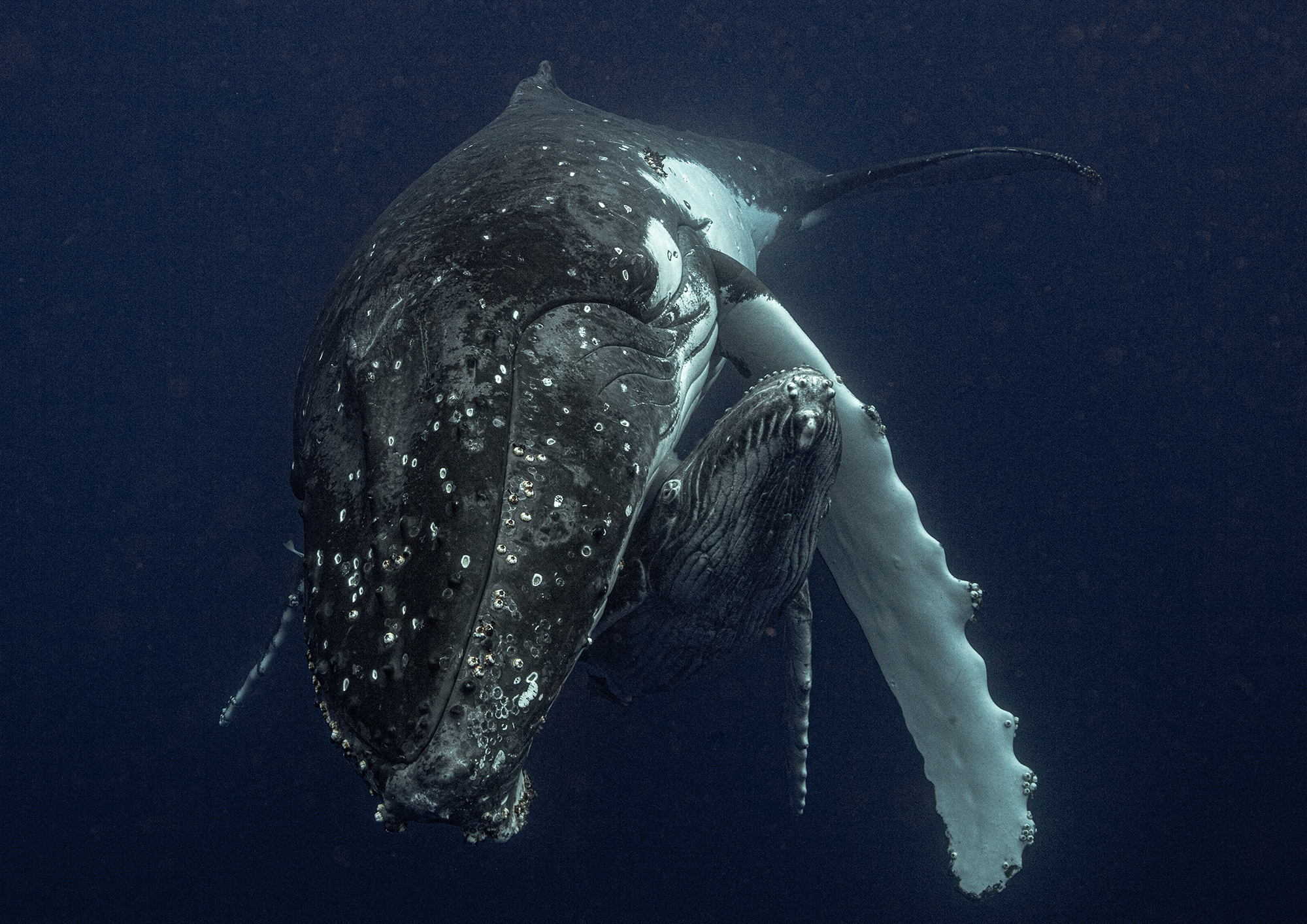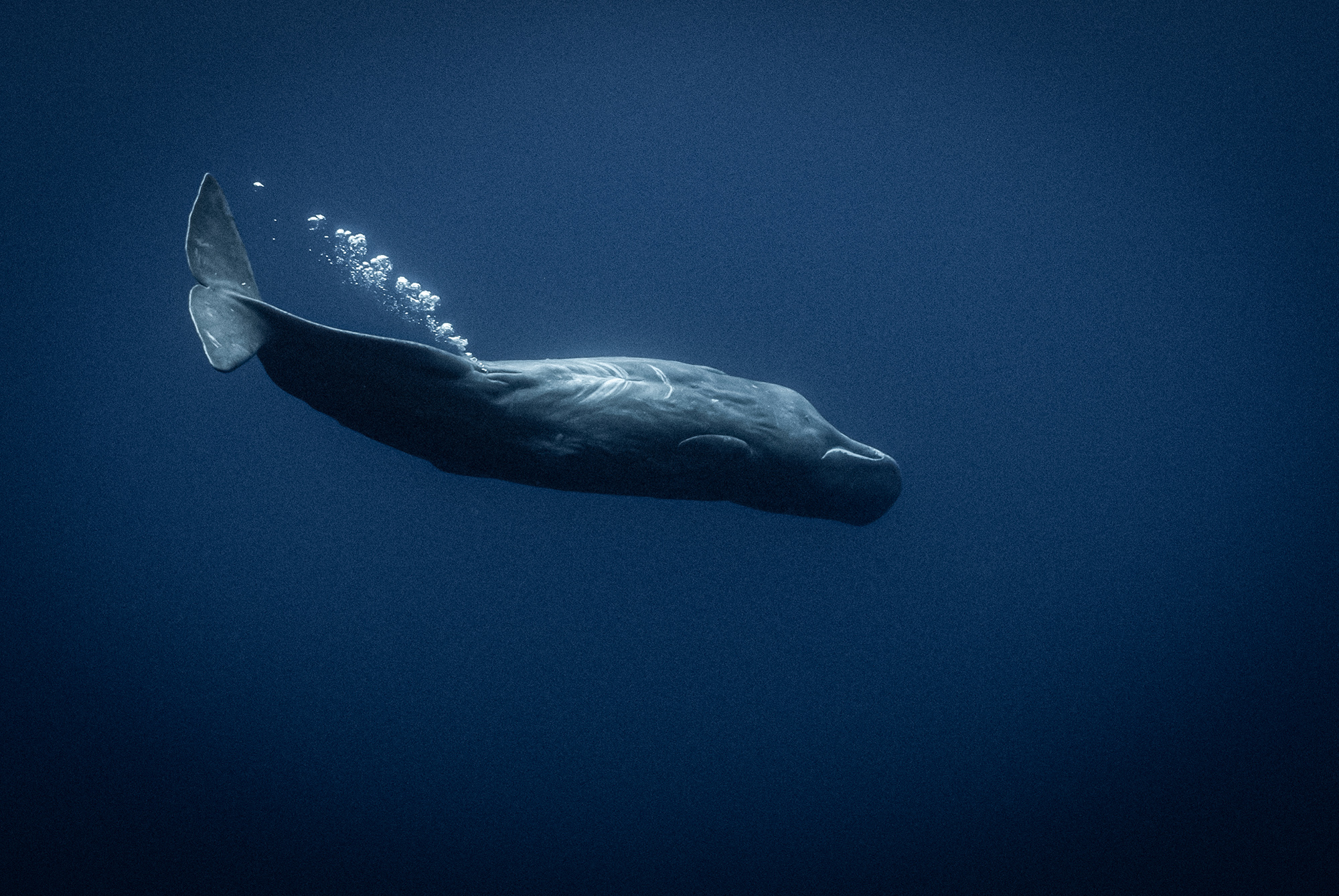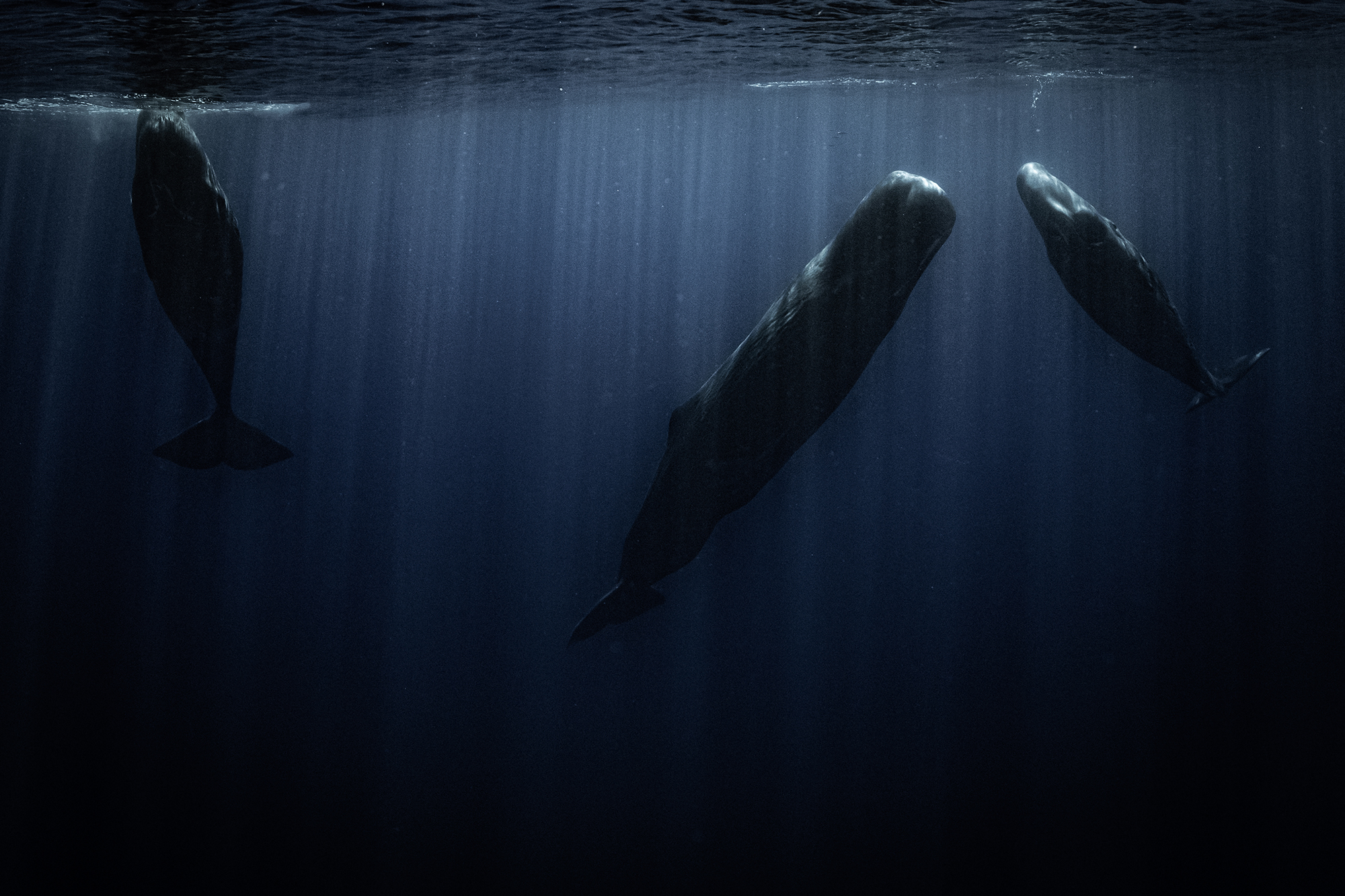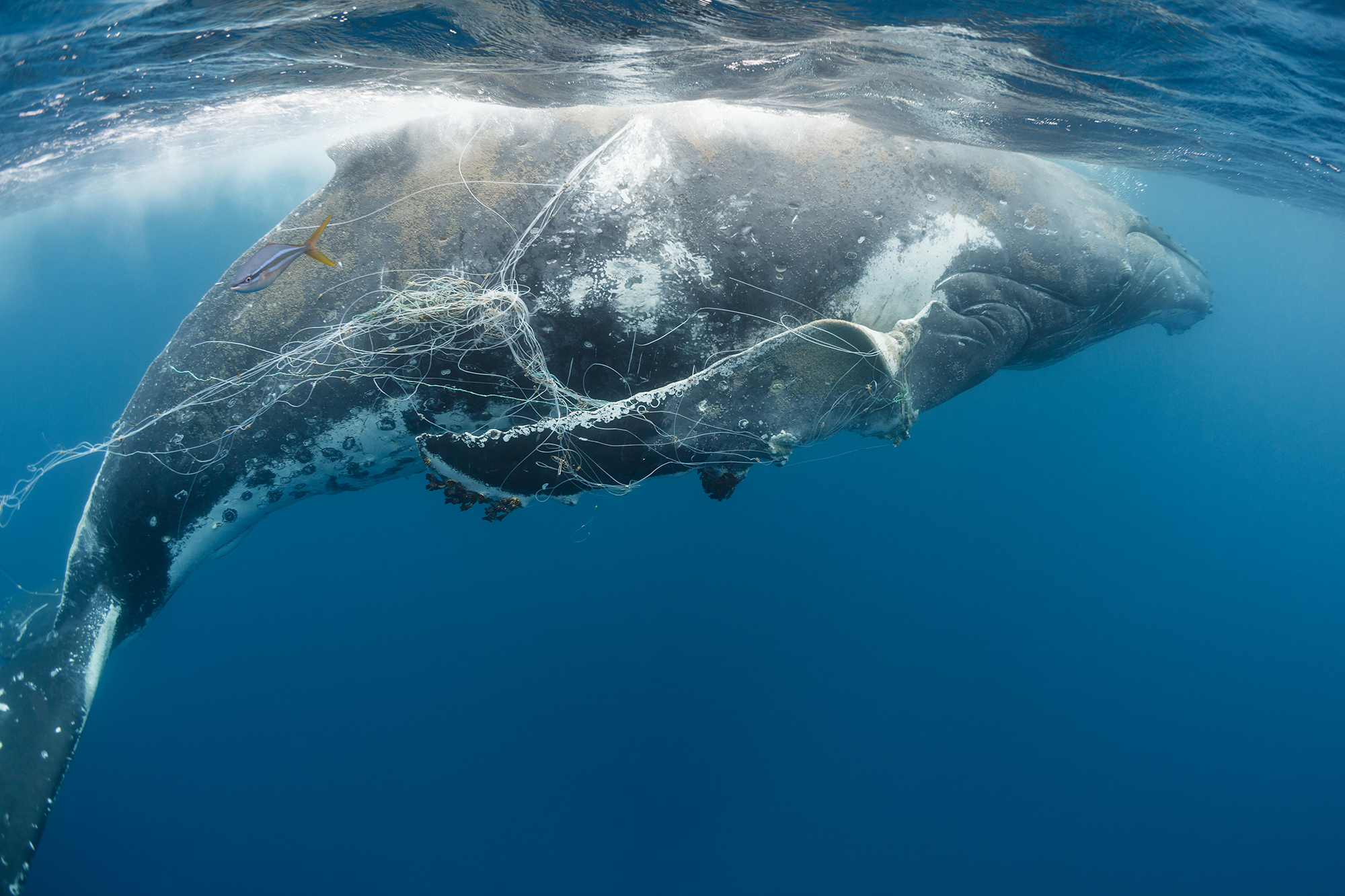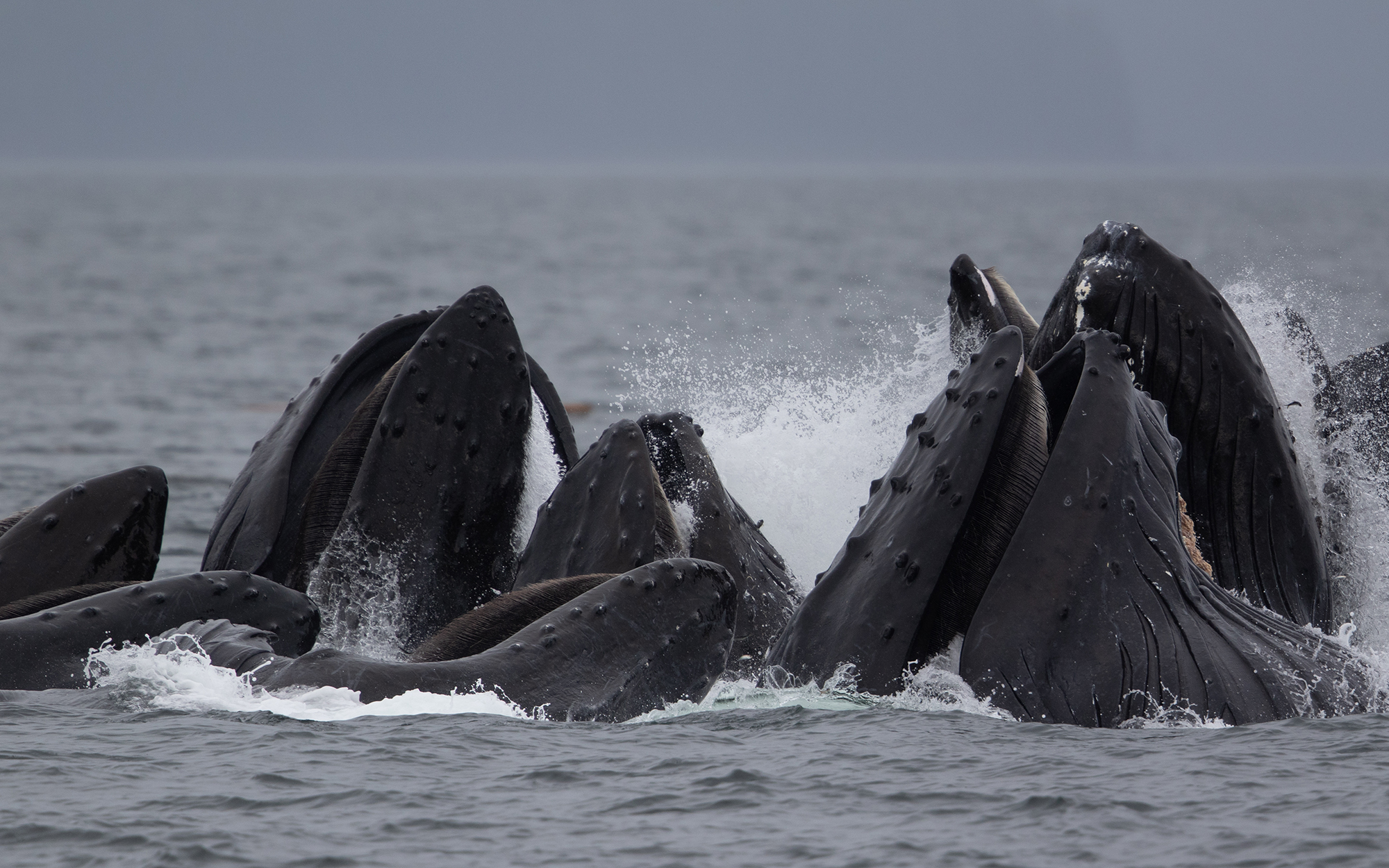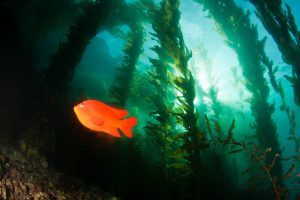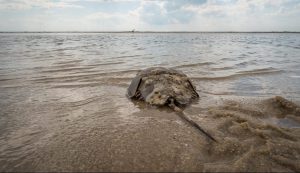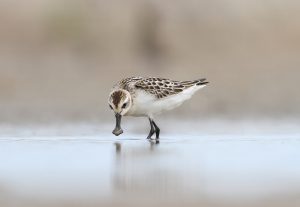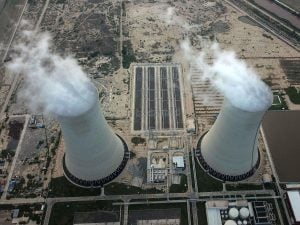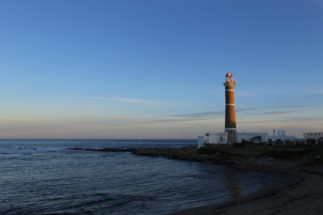Saving the whales may be more important than planting trees when it comes to tackling climate change and keeping our oceans healthy. The world’s largest animals play a crucial role, helping fertilise the microscopic plants that absorb 40% of CO2. They also capture vast amounts of carbon in their bodies before sinking to the bottom of the ocean when they die, where it can remain for centuries.
Last year, the International Monetary Fund (IMF) valued the role of whales in carbon sequestration and healthy ocean functions at more than US$1 trillion. Based on scientific papers, it estimated a single great whale to be worth more than US$2 million, given its contribution to carbon capture, fisheries enhancement and tourism.
But populations of whales in the world’s oceans have been decimated in the last two centuries, falling from 5 million to 1.5 million today. More than 30 years after commercial whaling was largely banned in a bid to protect them, whales continue to suffer from human impacts in the form of plastic and noise pollution, ship collisions, fishing gear and global warming.
Whales and carbon capture
A whale accumulates carbon through feeding and stores it in its body during its long lifetime. Some weigh 200 tonnes and their average lifespan is 70 years. One species, the bowhead whale, is estimated to have a lifespan of 268 years.
When a whale dies, it sinks to the bottom of the ocean, where the carbon in its body stays. The IMF estimates that each great whale sequesters 33 tonnes of CO2 on average, and that a tree absorbs only up to 22kg CO2 a year. Tree-planting schemes are being seen as the cheapest and fastest method of taking CO2 out of the atmosphere. The evidence suggests conserving and boosting whale populations also has great carbon-capturing potential.
Sunken whale carcasses take decades to decompose, becoming an entire ecosystem in themselves, supporting deep-sea species from large scavengers to microscopic bacteria with a huge and immediate source of food.
A sperm whale farting. Economists have yet to put a value on this “ecosystem service”. (Image © Wade & Robyn Hughes)
Priceless poo
Whales do more for carbon capture when they are alive, however, thanks to their jumbo-sized poo. These “faecal plumes” contain enormous amounts of nutrients – including phosphorus, iron and nitrogen – that are essential for the growth of phytoplankton. When these microscopic plants photosynthesise, they consume carbon dioxide and produce oxygen. The IMF calculates that phytoplankton are responsible for capturing about 37 billion tonnes of CO2, the same as 1.7 trillion trees, or four Amazon rainforests. They also contribute as much as 50-85% of the oxygen in the Earth’s atmosphere. Sylvia Earle, the famous National Geographic ocean explorer, has estimated that they provide the oxygen for one in every five breaths we take.
Scientific research shows that whales have a “multiplier effect”, increasing phytoplankton production wherever they are found. As well as bringing nutrients from the ocean’s depths to the surface through their vertical movement, known as the “whale pump”, they also distribute them laterally, the “whale conveyor belt”, on their vast migrations.
A group of sperm whales gather to defecate together. The reason for this rarely documented behaviour is not known. It could be a defence mechanism, although in this case it's most likely a social activity. (Image © Tony Wu)
Whale behaviour
Humans have always found the behaviour of whales intriguing and endearing, perhaps because we have so much in common. Whales and dolphins live in tightly knit groups known as pods, have complex relationships and talk to each other. A 2017 study compiled a list of behaviours that are similar to humans and primates including: working together for mutual benefit; teaching young how to hunt and use tools; using regional “dialects”; identifying individuals with unique sounds; looking after young not their own; and social play.
A small group of sperm whales in the Azores. Sperm whales are highly social and can sometimes be seen in pods of up to 50 individuals. (Image © Wade & Robyn Hughes)
Ship strikes and entanglement
Many of the world’s busiest cargo and ferry lanes and ports directly overlap with areas where whales feed and breed or travel along migratory routes. Ship strikes have become a leading cause of death, with whales often simply unable to get out of the way in time. Noise from boats also interferes with their ability to navigate and communicate.
This blue whale was most likely killed by a ship strike. Its body was sighted in busy shipping waters south of Sri Lanka. (Image © Tony Wu)
As fisheries respond to a growing global appetite for seafood, entanglement in fishing gear is also an increasing threat. Particularly affected is the North Atlantic right whale, found along the east coast of North America from Florida to Canada, a region also home to lucrative lobster and crab fisheries. The long vertical ropes or “lines” used to connect traps on the ocean floor to floats on the water’s surface can be lethal to right whales. The ropes can constrict body parts and cut into flesh and bone, causing abrasion, infection and sometimes severance. Often whales can drag the heavy gear around for months, struggling to eat, swim, dive, breathe and reproduce. They lose energy and weight gradually, sometimes taking years to die.
Studies show that nearly three-quarters (72%) of diagnosed right whale deaths between 2010-18 occurred because of entanglements, and that 85% have been caught in fishing gear at least once. There are now just 409 remaining individuals, with less than 100 females of breeding age. Without intervention, they may be functionally extinct by 2040.
As well as live fishing gear, whales are also being killed in their thousands by “ghost gear”: abandoned, lost or discarded plastic fishing nets, ropes and lines in which they become trapped.
This humpback whale is entangled in longline fishing gear, impeding its movement (Image © Tony Wu)
Climate change
Warmer ocean temperatures and melting sea ice pose serious threats to the survival of the world’s great whales. The reduction of sea ice cover is likely to impact belugas, narwhal and bowhead species for whom the Arctic provides habitat and feeding grounds. In the Antarctic, sea ice is also decreasing in certain areas, resulting in massive declines in krill, a primary food source for many species including whales.
Humpback whales in Alaska have developed an ingenious method of fishing for herring known as “bubblenetting”, but their prey is under threat from ocean warming. (Image © Wade & Robyn Hughes)
The krill and plankton that form the foundation of the marine ecosystem are also being affected by the increasing acidification of the ocean as it absorbs more CO2. Some species will be unable to form and maintain their protective calcium carbonate shells, threatening animals further up the food chain. Studies show that plankton populations could decrease by as much as 40% by 2050. Coral reefs and polar regions are on the frontline of the acidification crisis, with North Pacific salmon, mackerel, herring, cod and baleen whales among the species under the most immediate threat.
Warmer seas will also affect the distribution of whales. If their prey moves as a result of climate change, they will likely follow. Mass movement of species to different habitats will result in increased competition for diminishing amounts of prey.
Pollution
Toxic chemicals banned decades ago could kill off more than half of the world’s killer whale population in 30-50 years, scientists believe. PCBs (polychlorinated biphenyls) are manmade organic compounds once used in electrical equipment, flame retardants and paints until they were found to be so dangerous to human health that they were banned in the US in the 1970s and Europe in 1987. Resistant to heat, chemicals and natural degradation, the same things that made PCBs so attractive also makes them hard to destroy, and so they remain in the ecosystem decades later. Some were improperly stored or disposed of, or even directly discharged into soils, rivers, wetlands and the ocean. Entering the food chain, they have worked their way up to concentrate in top predators, causing cancers, altering behaviour, damaging immune systems and harming reproduction. European killer whale populations, along with dolphins and porpoises, are the most contaminated in the world, and sadly some of the most heavily exposed populations are not expected to survive the next few decades.
Killer whales are particularly threatened by lingering pollution from toxic chemicals (Image © Tony Wu)
We are grateful to Tony Wu and Wade and Robyn Hughes for the use of their stunning photographs in this article.
Wade and Robyn’s new book Looking for Whales is now available to order online.


